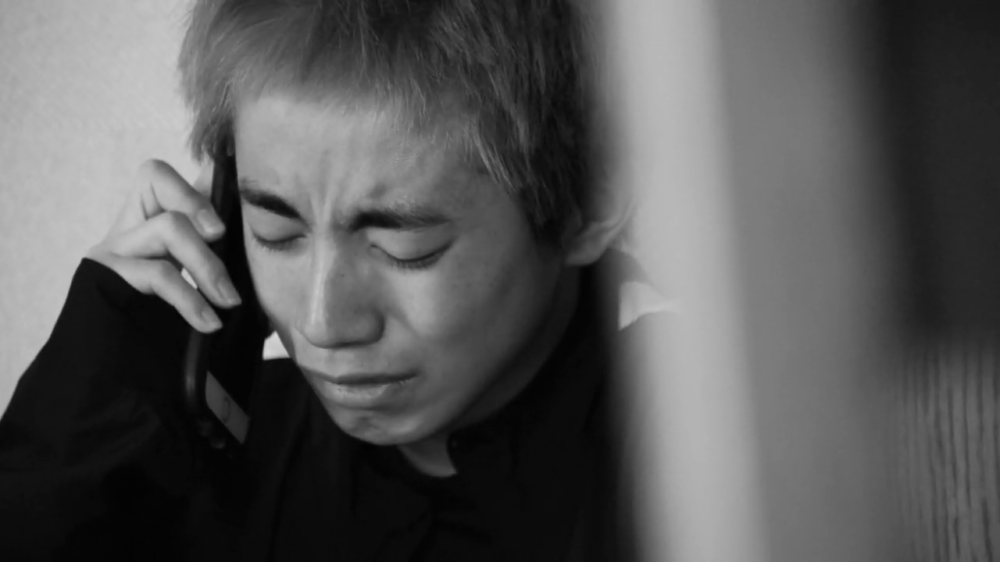Introduction
We continue our exploration of new Japanese indie narratives screening at the Osaka Asian Film Festival by reviewing Akihiko Yano’s Yes, Yes, Yes. Will Yano proof his directorial talent or will he fail to life up the task? Let’s find out.
Review
Sayuri (Nahoko Kawasumi), a mother of two is hospitalized for a life-threatening illness. At the hospital, she speaks to her husband Masaaki (Kazunari Uryu), her pregnant daughter Juri (Minami Inoue), and her son Takeaki (Kazuma Uesugi), as if she knows that she is going to die. Confronted with his mother’s words, words that subtle evoke her acceptance of her own coming death, Takeaki runs away. His father tries to stop him but fails.
Yes, Yes, Yes is a narrative that – if one thinks about it – starts with a rather awkward question: Why do we live if we lose everything when we die? This question, posed by Takeaki in response to the hospitalization of his mother, is a question driven by the fear of loss, not a fear of his own death, but a fear of losing his mother. It is because the loss of his mother seems inevitable, that he starts questioning the purpose of his life.
To better unearth the ‘awkward’ element that marks this question, we propose to reformulate his initial question: Why invest in crafting a symbolic structure (i.e. a family), why invest in the establishment of meaningful (familial) bonds with others, when that field, as structured by the people who are important to the subject, ‘evaporates’ by dying? Now one can easily discern that this question is narcissistically driven. The question, first and foremost, concerns the loss of the one who dies and not the impact of one’s death on his important others, the others who ensure that the deceased stays alive in the symbolic. Yet, it is precisely because Takeaki’s question is narcissistic that the seemingly inevitable loss of his mother problematizes his own position within the social field. His various acting-outs, e.g. running away from the hospital, destroying the flower-bed, changing his hairstyle, … etc., show nothing other than his failure to find an answer to the question that puts the meaning of his own existence into question.
The second salient element in the narrative concerns the conflict between Juri and the father about keeping or not keeping her unborn child. This conflict, as quickly becomes clear, is function of the father’s difficulty to accept the looming loss of his wife. The reason why he is not ready yet to accept Juri’s child is because he feels that accepting his daughter’s child into his family necessitates the acceptance of the death of his wife – the child, a symbol of the cycle of life and death, is given in exchange of the death of the mother. In other words, the father’s refusal of Juri’s child is a vein fantasmatical attempt to ward off the death of his wife.
The existential drama that marks Takeaki and the refusal by the father to accept the inevitable problematizes the relation between son and father. Their particular reactions to the coming loss renders them unable to meet each other at the level of what they cannot accept: the fast approaching death of the mother/wife. The passive as well as the active violence that marks their relationship is the result of their inability to see the fear of loss that marks the other and a failure to bring this fear into play between them at an inter-subjective level. Given the centrality of this conflict, it is not that difficult to discover the main question that drives Yes, Yes, Yes. What Yano explores is nothing but the following: What is needed for one of them to address to change their subjective position of acting-out and address the other, via speech or via an act that speaks to the subject, at the level of the loss that he fears?
The composition of Yes, Yes, Yes is marked by two tendencies, a tendency to frame nature and other settings with a mix of static shots and fluid spatial movement and tendency to frame subjects, their interactions, and their (violent) acts, with a mix of subtly trembling static moments and dynamic moving moments, spatial as well as tracking (Cine-note 1). Even though it is possible that the subtle trembling movement is an artifact caused by technical limitations, the trembling character of the camera, by virtue of resembling documentary cinema, gives the narrative a certain naturalism. This cinematographically induced naturalism is, in truth, made truly potent by the performances of the cast. In other words, if the performances were not marked by a certain raw naturalism, the cinematography would not have been able to sensibly emphasize this naturalism and strengthen the natural emotions on display.
The cinematographical highlight of Yes, Yes, Yes concerns a sequence where Yano expertly exploits the signifier-ness of the image to evoke, almost without using any speech, Takeaki’s subjective state of turmoil.
The narrative also stands out due to its black-and-white colour-scheme. This colour-scheme allows Yano to craft some truly artful shots and deliver some highly visually pleasing moments. Yet, we do think that a play with contrast might have benefited the overall visual pleasure of the Yes, Yes, Yes and allowed Yano to strengthen the compositional artfulness of other visual moments.
Yes, Yes, Yes is a raw and powerful drama narrative that confronts the spectator with the inherent difficulty of accepting the loss of a loved one. In a very precise manner, Yano shows the need for loss to be socialized and how the failure to bring the notion of loss into play at an intersubjective level causes either a social or a subjective ravage. An impressive debut by Akihiko Yano.
Notes
Cine-note 1: Exceptions to these tendencies do exist. Pure static shots are, in fact, also used to frame human interactions – see for example the scene where Takeaki and Juri discuss her pregnancy. These truly static shots are, in most if not all cases, medium shots.
It is because these truly static moments exists that we were led to wonder if the cinematographically tremble that marks many shots was not a result of technical limitations. Yet, there are also subtle indications that the compositional shifts between trembling fixed shots and true static shots are deliberate.






One Comment Add yours